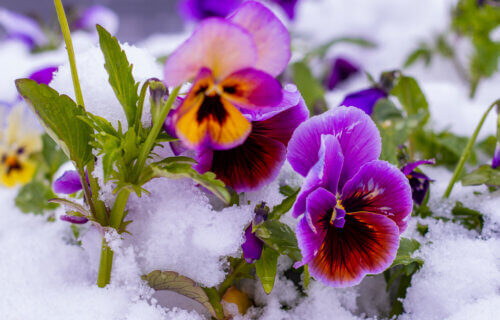We all wish we could safeguard our precious plant babies so that they survive year-round, but it’s just not possible. If we want a garden that makes us smile every month of the year, we have to put some effort into choosing the best plants for winter. These super-strength plants don’t just survive winter; they save us from the winter blues. The winter warriors on our list are the real MVPs, thumbing their noses at frosty temps and short days.
Aside from choosing the right seeds to plant, certain practices can improve your garden’s longevity in cold weather. Below, we have compiled some winter garden care tips to guide you during the chilly season and keep your plants in tip-top shape.
Winter Garden Care Tips
- Mulch Matters: Apply a generous layer of mulch around your plants to insulate their roots from the harsh winter temperatures. Choose organic materials like shredded bark or wood chips for added nutrients.
- Watering Wisely: While your plants may need less water in winter, don’t neglect them completely. Check the soil moisture regularly and give them a deep soak when the top inch or two feels dry.
- Sun Smarts: Place your winter-loving plants in areas that receive full sun exposure, especially if you live in a colder climate. Sunlight helps warm the soil and prevents frost damage.
- Protect from Snowfall: Heavy snowfall can damage delicate branches. Gently brush off snow accumulation to prevent breakage. For vulnerable plants, consider using stakes or cages for extra support.
- Tame the Pruning Twigs: Resist the urge to prune most winter plants heavily. Many shrubs and trees set their flower buds in winter, and drastic pruning can remove future blooms. Wait until late winter or early spring for major pruning tasks.
Bonus Tip: Attract feathered friends to your winter garden! Plant species that offer berries, seeds, and shelter, like holly, crabapple trees, and pines. You’ll create a beautiful winter haven for both plants and wildlife.
By incorporating these clever care tips, you can transform your garden into a captivating winter wonderland. Remember, with a little planning and creativity, you can enjoy a vibrant outdoor space all year round!
StudyFinds has compiled the greatest list of the best plants for winter, according to the gardening gurus. We have sifted through 11 expert recommendations as they share their top-secret tips to turn your outdoor space into a winter wonderland. Our list is made up of the most recommended plants across each list we reviewed. We’re talking easy-peasy, green-thumb-approved plant recommendations that even a gardening novice can keep alive. Drop your favorite winter plant in the comments and let’s cultivate a garden of knowledge together.
The List: Best Winter Plants, According to Experts
1. Pansies and Violas
The number one on the list of best plants for winter are pansies and violas. “These adorable flowers with little ‘faces’ come in every color of the rainbow, and they don’t mind a chill—so they’ll last into late fall or early winter in many climates. In the South, they’ll survive throughout most of the winter. Though they’re often considered annuals, some types will drop seeds and come back next spring,” says The Pioneer Woman.
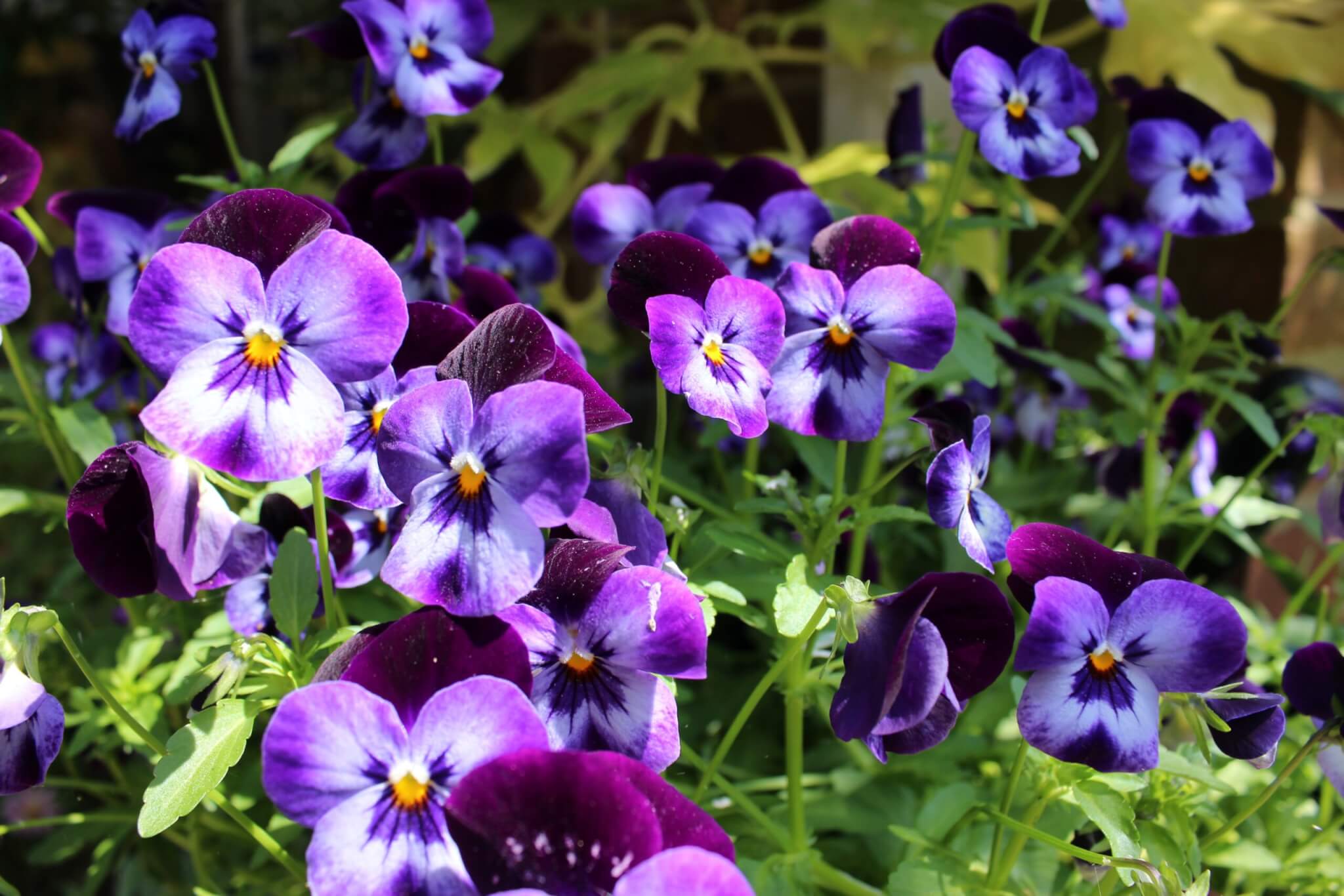
Transform your garden into a cozy retreat with winter-loving greenery. “Pansies and violas bloom for most of the winter in mild climates, and some types perk back up in the spring in cold climates. They’re technically annuals, but many varieties drop seeds so they’ll pop up again the next spring,” writes House Beautiful.
Ever caught your plants having a cozy winter soirée without you? “Violas and Pansies are very close cousins, coming from the same genus of plants, Violas are a wider ranging species that encompasses Pansies. In warmer climates, these sweet flowers can bloom continuously through the winter and reseed themselves, so they appear to be perennials. In colder climates, they can be planted as soon as the ground thaws, and act as flowering annuals. Violas are commonly used as decorations on baked goods. Unfortunately, in my experience they are also a tasty treat for squirrels, but they bloom freely so they typically rebound quickly if an animal decides to snack on them. They go dormant only in the warmest months and can bloom for more than half of the year in temperate climates,” shares Epic Gardening.
2. Snowdrops
As you may be able to guess from the name, snowdrops are winter-friendly blooms. “These darling droopy-headed flowers look best at the front of borders or in rock gardens and often start blooming when snow is still on the ground (thus, the name!),” says House Beautiful.
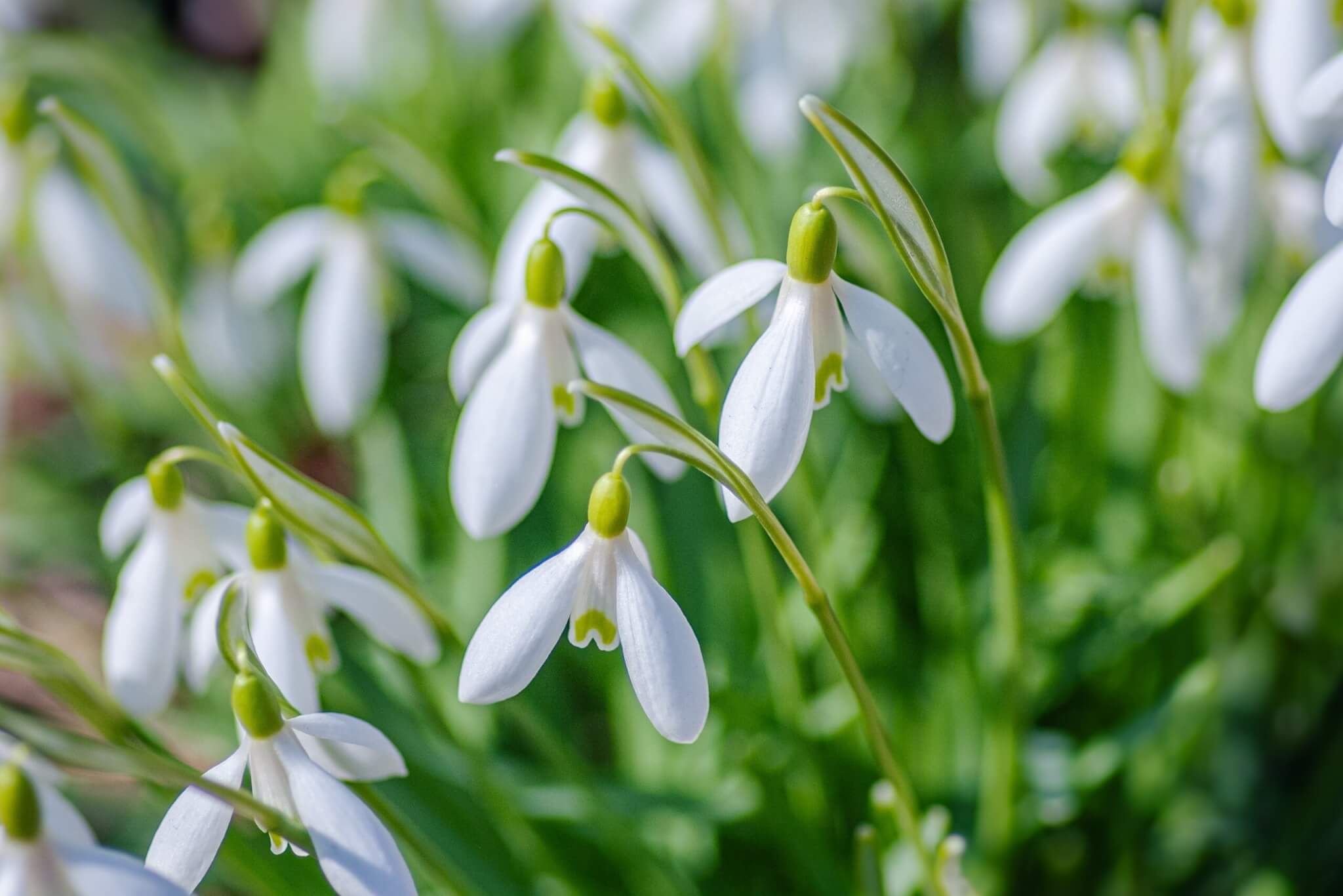
Meet the cool kids of the plant world that thrive when temperatures drop. “Just as the name indicates, these tiny flowers appear when snow is still on the ground in cold climates. Snowdrops, also called galanthus, look delicate but are quite cold-hardy. Their petite drooping green and white flowers are a breath of fresh air in late winter and early spring. Plant them in the fall for winter and spring flowers,” writes The Pioneer Woman.
Curious about the flora that turns winter from frosty to fabulous? “As you’d imagine, these fall-planted bulbs appear when snow still remains on the ground. Their delicate nodding heads make them a natural for front of the border, along walkways, or in rock gardens,” shares Country Living.
3. Red Twig Dogwood
Number three on the list of best plants for winter is the red twig dogwood. “The bare branches of this shrub look striking against evergreens or snow. You also can trim a few branches to bring indoors for holiday décor,” shares Country Living.
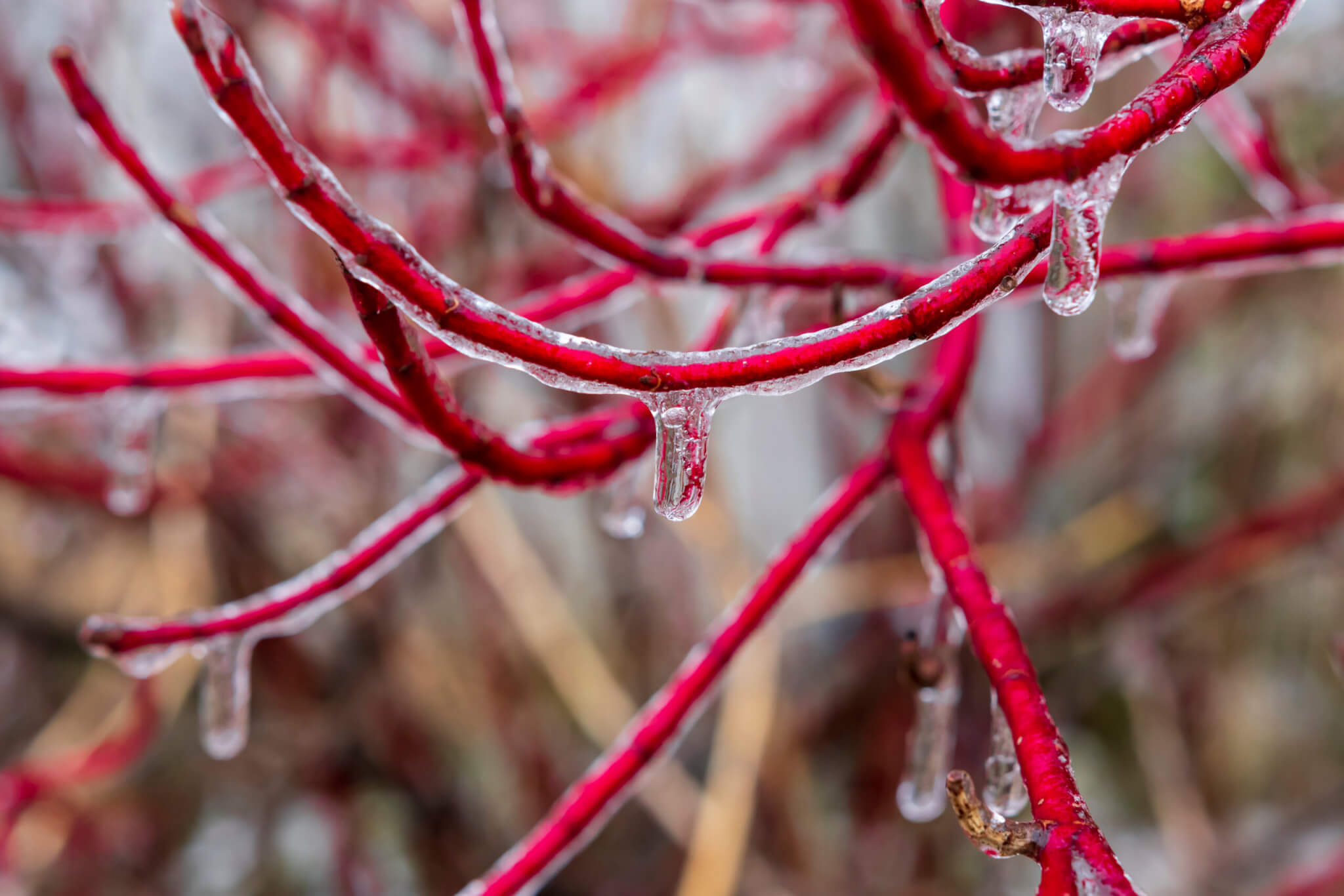
Peek behind the frosty curtain and meet the plants that refuse to hibernate. “It’s not exactly a flower, but the bare branches of this bright red shrub make a bold statement in your otherwise colorless winter garden. The colorful branches last all winter long and look amazing silhouetted against a blanket of snow. You can also cut a few branches to add to floral or holiday displays,” writes The Pioneer Woman.
Did you know your garden could be a winter style icon? “If you’re looking for drama, red twig dogwoods are striking specimens, especially contrasted against a blanket of snow. The intense red color lasts all winter, and it’s an incredibly cold-hardy shrub, too,” says Pure Wow.
4. Primrose
No, no Katniss Everdeen’s sister in “The Hunger Games.” “Like hostas, primroses have shallow roots that should be protected by mulch in the winter to retain moisture. Also, a popular plant with fairy gardens, primrose is hardy in Zones 3-8 and prefers light shade,” says Ambius.
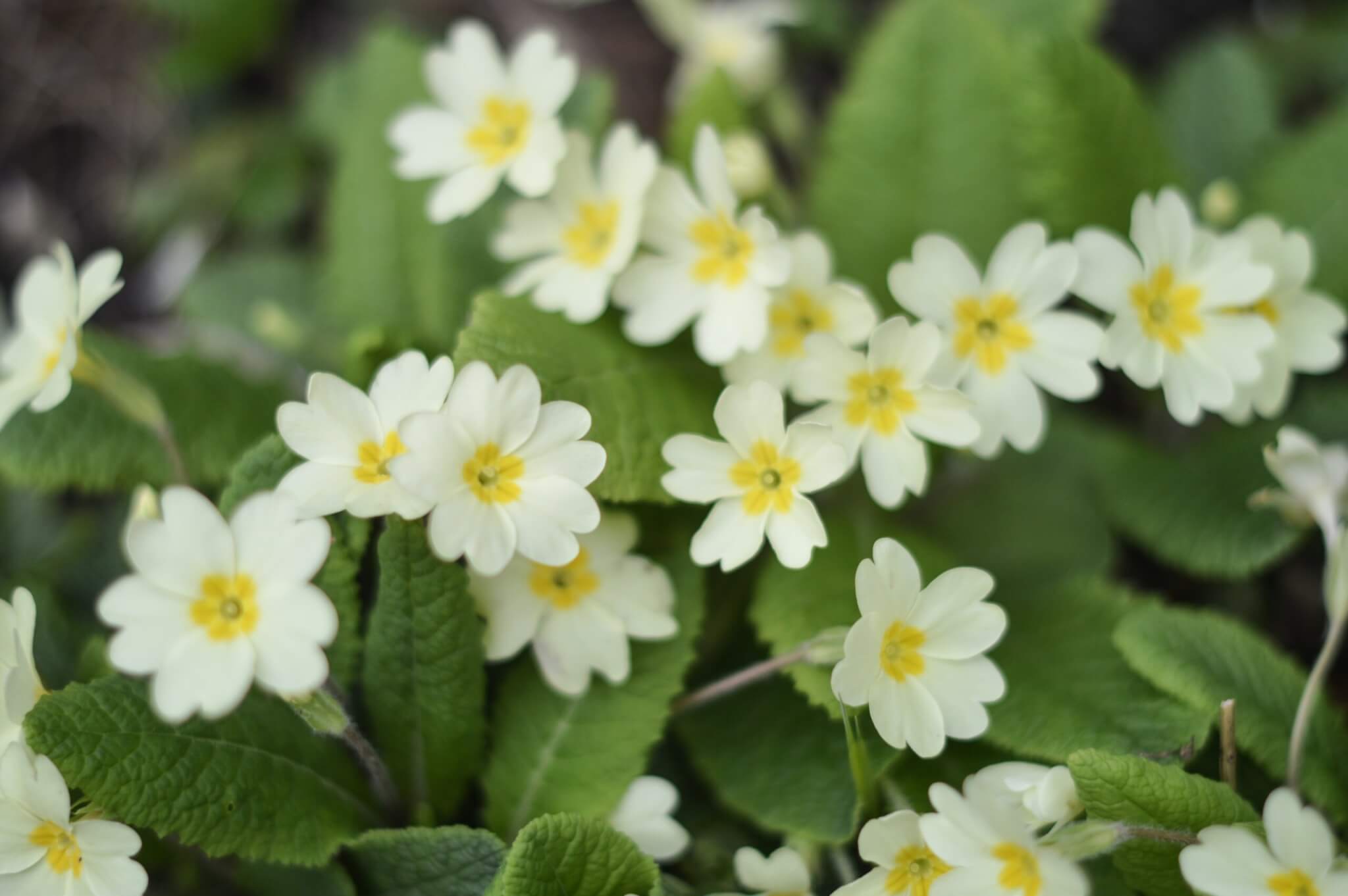
Elevate your winter vibes with plants that bring style to the frosty scene. “Primrose is a wonderful genus of over 500 species that may remain evergreen in the zones where they are hardy. While very cold tolerant, if the temperature is cold for very long periods of time, primrose can go dormant, but it will spring back to life as soon as things start to warm up. Their pretty, delicate flowers grow in clusters atop rosettes of leaves and come in a variety of colors such as red, pink, blue, orange, white, yellow, and purple. They prefer partial shade, although some varieties can handle more sun than others. Primrose plants will clump and multiply over time,” writes Epic Gardening.
Ever caught yourself daydreaming about a garden that laughs in the face of winter frost? “These flowers look delicate, but they’re actually incredibly cold-hardy. They’re one of the earliest perennials to bloom in late winter or early spring. Read the label to make sure it’s a primrose variety that will survive your winters,” shares Pure Wow.
5. Witch Hazel
The number five on the list of best plants for winter is witch hazel. “The quirky, wispy-looking yellow flowers of witch hazel appear on naked branches in mid-winter, even in the coldest climates. There are several different types, so read the plant tag or description to be sure you’re purchasing a winter-blooming variety,” shares Pure Wow.
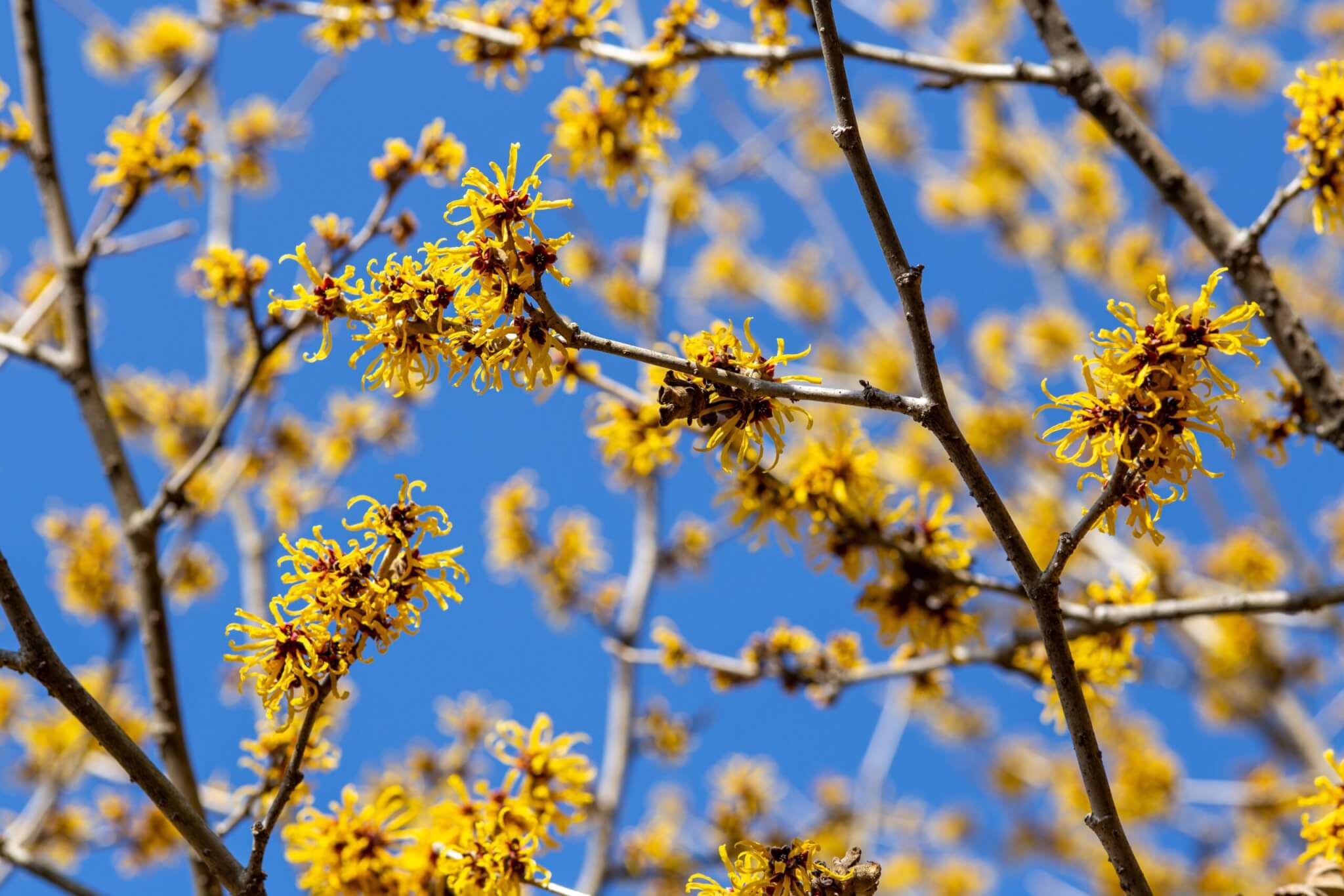
These botanical wonders add a splash of color to your winter palette. “Witch hazel is a deciduous shrub whose wiry yellow flowers appear on bare branches in the middle of winter, adding plenty of interest to the garden at this time of the year. This is a pest-tolerant and hardy species great for a woodland garden. It does best in neutral to slightly acidic soil, in a position sheltered from drying winds,” says Horticulture.
Most people think of the liquid witch hazel you may have in your bathroom, but “Witch Hazel plant is known for both its rich orange flowers and astringent properties (making it a potent skincare ingredient!). One good news for homesteaders in especially cold areas is that it requires cold winters to fully bloom. Witch hazels can adapt to any soil type but are at their best in moist soil. They don’t require a lot of watering once they mature and just require some amount of pruning to maintain their shape,” writes Home Steading.
6. Blue Spruce
Number six on the list of best plants for winter is the blue spruce. “Blue spruce is a large tree, but small shrublike cultivars max out at 5 to 15 feet high. The blue-gray foliage is particularly alluring in the winter landscape when a dash of color is sorely needed. For a bluer color, select a cultivar known for its intense blue color,” says Birds and Blooms.
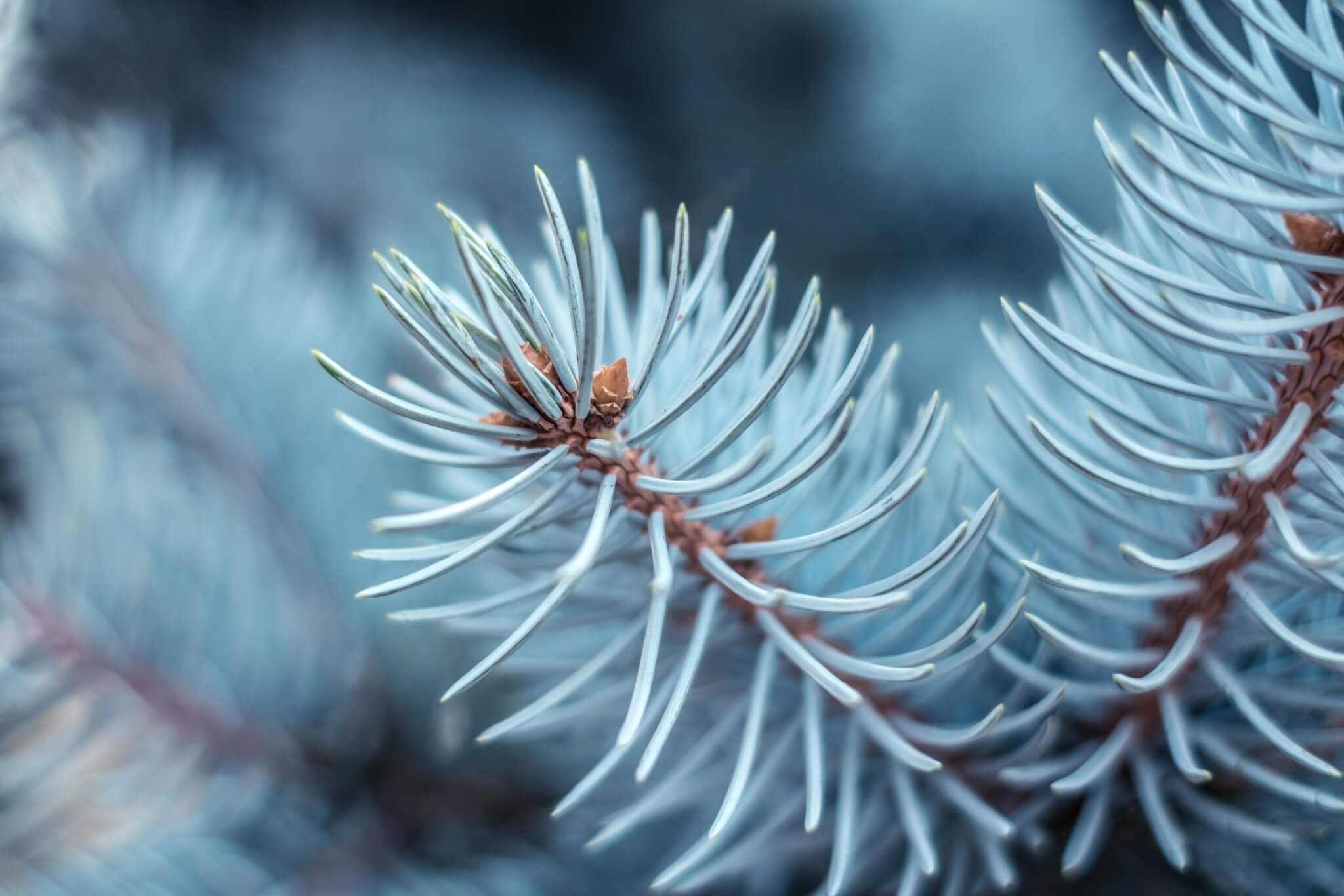
Let your outdoor space become a winter wonderland with these cool companions. “The blue spruce tree is a perfectly picturesque winter plant. Not only does it look beautiful covered in snow, but it is also hardy in Zones 2-7, making it suitable for a large portion of the United States. This tree prefers full sun and serves as a great audio, visual, and wind screen. Beware of using insecticides on this tree, as they can strip away the needle coating that gives the blue spruce its hue,” writes Ambius.
Wondering which plants are the MVPs of the winter garden league? “Colorado blue spruce is one of the best winter garden plants that look beautiful wrapped in snow. It presents a unique, silver blue-green color all year round and grows in a pyramidical shape. It’s a perfect conifer for large backyards and open landscapes. Apart from that, you can grow the dwarf form of blue spruce in small gardens, patios, and terraces,” shares Balcony Garden Web.
7. Hellebores
Finally, the number seven on the list of the best plants for winters is Hellebores. “Here at Hayloft, we absolutely love our Hellebores. Whilst other plants slumber, bring a magical touch to your garden with their luxuriant blousy blooms and abundant evergreen foliage. They may look dainty in appearance but don’t be fooled as they are sturdy plants that will survive the cold temperatures of winter and remain awe-inspiring,” says Hayloft.
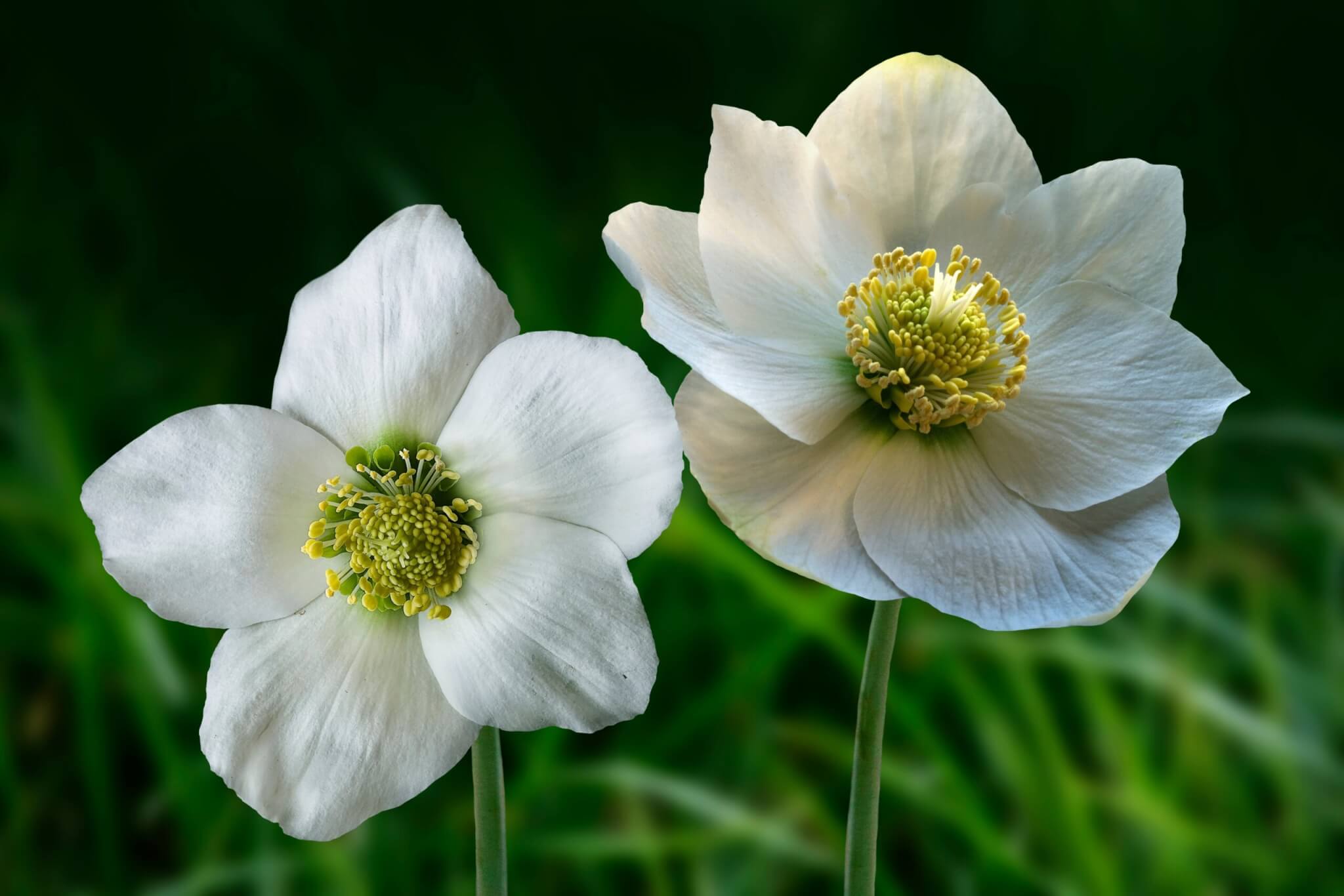
Dive into winter with plants that turn your garden into a green masterpiece. “A collection of about 20 different species in the genus Helleborus, these stunning evergreen perennials have the most exquisite flowers in a shade of pink, white and purple. They are also called Lenten roses because they typically bloom during Lent in mid to late winter, though they are not related to roses,” writes Country Living.
Who knew winter gardens could be so cool and, well, green? “If you’ve never seen these stunning flowers, also called Lenten roses, you’re in for a surprise. They appear in mid to late winter, often around the time of Lent, depending on your climate. Their lush petals and exquisite color make them a must-have. These perennials are super cold hardy, so you can plant them even where you have tough winters,” shares The Pioneer Woman.
Which plant would you love to protect all winter long? Share your fave in the comments!
You might also be interested in:
Sources:
- The Pioneer Woman
- House Beautiful
- Country Living
- Pure Wow
- Ambius
- Epic Gardening
- Horticulture
- Home Steading
- Hayloft
- Birds and Blooms
- Balcony Garden Web
Note: This article was not paid for nor sponsored. StudyFinds is not connected to nor partnered with any of the brands mentioned and receives no compensation for its recommendations.
